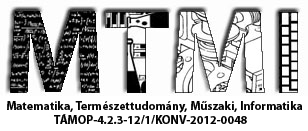Effects of PP2A inhibition on the expression of NR1 subunit of NMDA receptor in different melanoma cell lines
Előadás adatai
Recently it has been described that tumour cells express ionotropic N-methyl-D-aspartate (NMDA) receptors. The NR1 subunit is obligatory for ion channel formation. The C terminus of NR1 contains a nuclear localization signal surrounded by phosphorylation (P) sites. We aimed to investigate the effect of protein phosphatase 2A (PP2A) inhibition by okadaic acid (OA) on the P-status of these sites in melanoma cells. We also attempted to investigate if the subcellular localization of NR1 changes by OA treatment.
We cultured cells of the metastatic A2058 and the non-metastatic WM35 human melanoma cell lines in 3-3 independent experiments. At 70% confluence, we added 20 nM OA to the culture medium for 4 hours on two consecutive days. We performed RT-PCR, Western blot (WB) and immunocytochemistry (IC) on the cells. RT-PCR showed the presence of NR1 in both cell lines, and the protein’s expression was also detected by WB. Antibodies against non-P and P-forms of NR1 were used for IC. In WM35 cells, nuclear signals of NR1 were present in untreated cells and the intensity of this signal increased after OA treatments. We failed to detect any cytoplasmic signal in untreated controls, but it became visible after OA treatment. In A2058 cells, both cytoplasmic and nuclear signals of NR1 were visible and we did not observe any changes of them after OA treatments. In WM35 cells the positivity of p896-NR1 appeared both in the cytoplasm and the nucleus. After OA-treatments, nuclear signal increased while cytoplasmic signals did not behave so. On the contrary, p896-NR1 was barely detected in A2058 cells, but its expression increased after treatment. In WM35 cells, p897-NR1’s positivity was not seen in the cytoplasm and barely seen in the nucleus, which nuclear signal increased after OA-treatment. P897-NR1 showed strong signals in A2058 cells, which in contrast to the other observations decreased after treatment.
In summary, both unphosphorylated and phosphorylated forms of the NR1 subunit of NMDA-type glutamate receptor were present either in the cytoplasm or the nucleus of melanoma cells. WM35 cells responded with a pronounced increase of the nuclear signal when PP2A was inhibited.
Támogatók: Támogatók: Az NTP-TDK-14-0007 számú, A Debreceni Egyetem ÁOK TDK tevékenység népszerűsítése helyi konferencia keretében, az NTP-TDK-14-0006 számú, A Debreceni Egyetem Népegészségügyi Karán folyó Tudományos Diákköri kutatások támogatása, NTP-HHTDK-15-0011-es A Debreceni Egyetem ÁOK TDK tevékenység népszerűsítése 2016. évi helyi konferencia keretében, valamint a NTP-HHTDK-15-0057-es számú, A Debreceni Egyetem Népegészségügyi Karán folyó Tudományos Diákköri kutatások támogatása című pályázatokhoz kapcsolódóan az Emberi Erőforrás Támogatáskezelő, az Emberi Erőforrások Minisztériuma, az Oktatáskutató és Fejlesztő Intézet és a Nemzeti Tehetség Program



